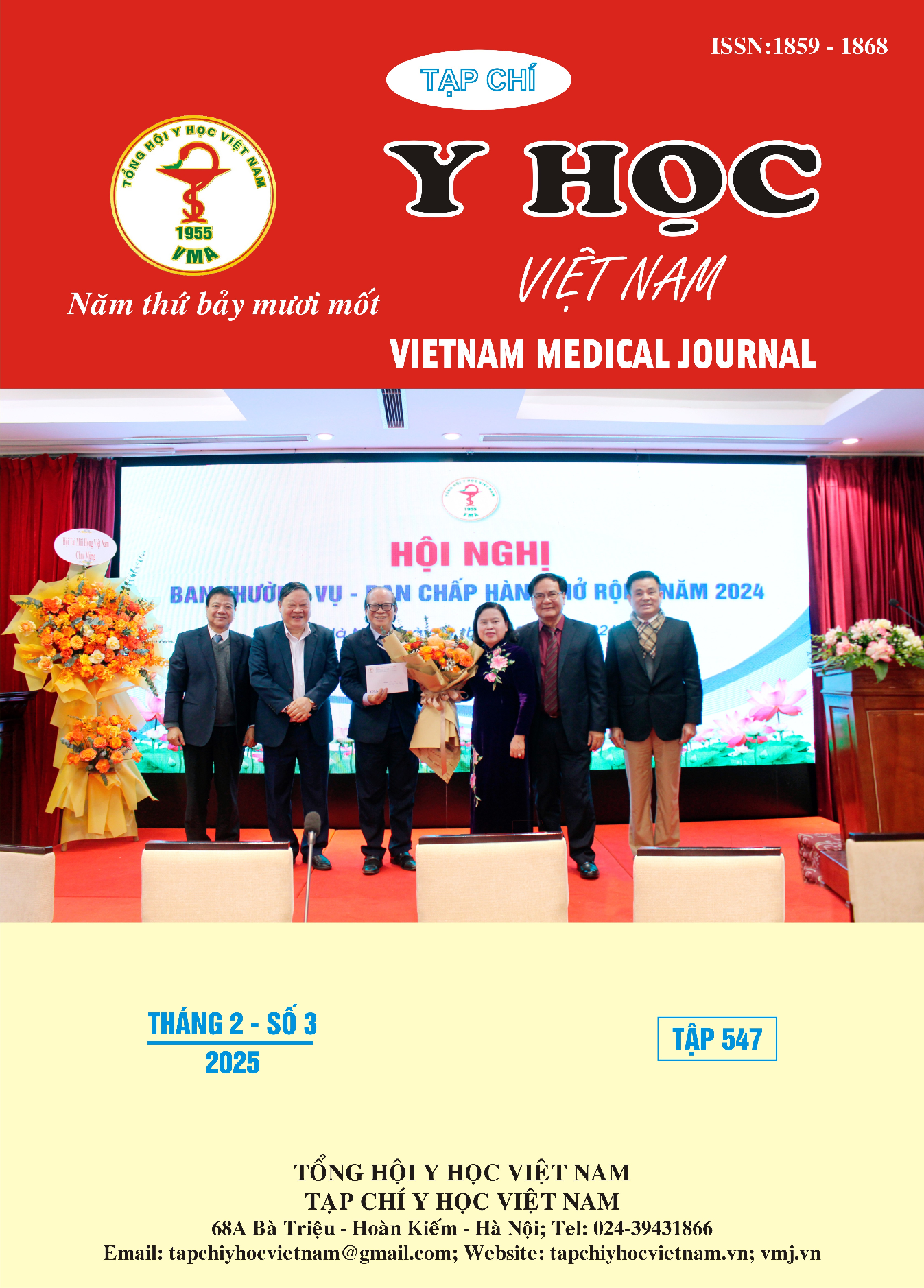INITIAL ASSESSMENT OF THE EXPRESSION LEVELS OF 11 PLASMA MICRORNAS AND THEIR DIAGNOSTIC VALUE IN SUPPORTING THE DIAGNOSIS OF GASTRIC CANCER
Main Article Content
Abstract
Background: Gastric cancer (GC) is one of the most prevalent and fatal cancers in Vietnam, often diagnosed at advanced stages due to nonspecific early symptoms. Circulating microRNAs (miRNAs) have emerged as promising biomarkers for GC diagnosis. This study aims to evaluate the initial expression levels of 11 miRNAs (miR-25, miR-93, miR-103, miR-106, miR-140, miR-142, miR-181, miR-182, miR-183) in GC patients compared to those with gastritis (GT) and analyze their diagnostic potential for GC. Subjects and Methods: 70 participants were recruited, including 35 GC and 35 GT patients, between January and December 2023 at the 108 Military Central Hospital. Plasma samples were collected, and miRNAs were extracted using standardized protocols. The expression levels of miRNAs were quantified using RT-qPCR with specific primers, and statistical analyses were performed using SPSS 27.0.1. Diagnostic performance was assessed via receiver operating characteristic (ROC) curve analysis. Results: The expression levels of miR-25, miR-103, miR-106b, and miR-181 were significantly elevated in GC patients compared to GT patients (p < 0.05), with fold changes of 2.28, 1.33, 1.45, and 3.82, respectively. ROC analysis revealed that miR-181 exhibited the highest diagnostic performance (AUC = 0.994, sensitivity = 100%, specificity = 97.1%), followed by miR-25 (AUC = 0.817), miR-103 (AUC = 0.738), and miR-106b (AUC = 0.654). Conclusion: Circulating miR-181, miR-25, and miR-103 are promising non-invasive biomarkers for GC diagnosis, with miR-181 demonstrating the highest diagnostic accuracy. Further studies with larger cohorts are warranted to validate these findings and explore their potential in the early detection and monitoring of GC.
Article Details
Keywords
Gastric cancer, microRNA
References
2. Hao, N.B., et al., The role of miRNA and lncRNA in gastric cancer. Oncotarget, 2017. 8(46): p. 81572-81582.
3. Ning, S., et al., Clinical significance and diagnostic capacity of serum TK1, CEA, CA 19-9 and CA 72-4 levels in gastric and colorectal cancer patients. J Cancer, 2018. 9(3): p. 494-501.
4. Shrestha, S., et al., A systematic review of microRNA expression profiling studies in human gastric cancer. Cancer Med, 2014. 3(4): p. 878-88.
5. So, J.B.Y., et al., Development and validation of a serum microRNA biomarker panel for detecting gastric cancer in a high-risk population. Gut, 2021. 70(5): p. 829-837.
6. Tian, W., X. Pang, F. Luan, Diagnosis value of miR-181, miR-652, and CA72-4 for gastric cancer. J Clin Lab Anal, 2022. 36(6): p. e24411.
7. Ueda, T., et al., Relation between microRNA expression and progression and prognosis of gastric cancer: a microRNA expression analysis. Lancet Oncol, 2010. 11(2): p. 136-46.
8. Hwang, J., et al., MicroRNA Expression Profiles in Gastric Carcinogenesis. Sci Rep, 2018. 8(1): p. 14393.
9. Petrocca, F., et al., E2F1-regulated microRNAs impair TGFbeta-dependent cell-cycle arrest and apoptosis in gastric cancer. Cancer Cell, 2008. 13(3): p. 272-86.


